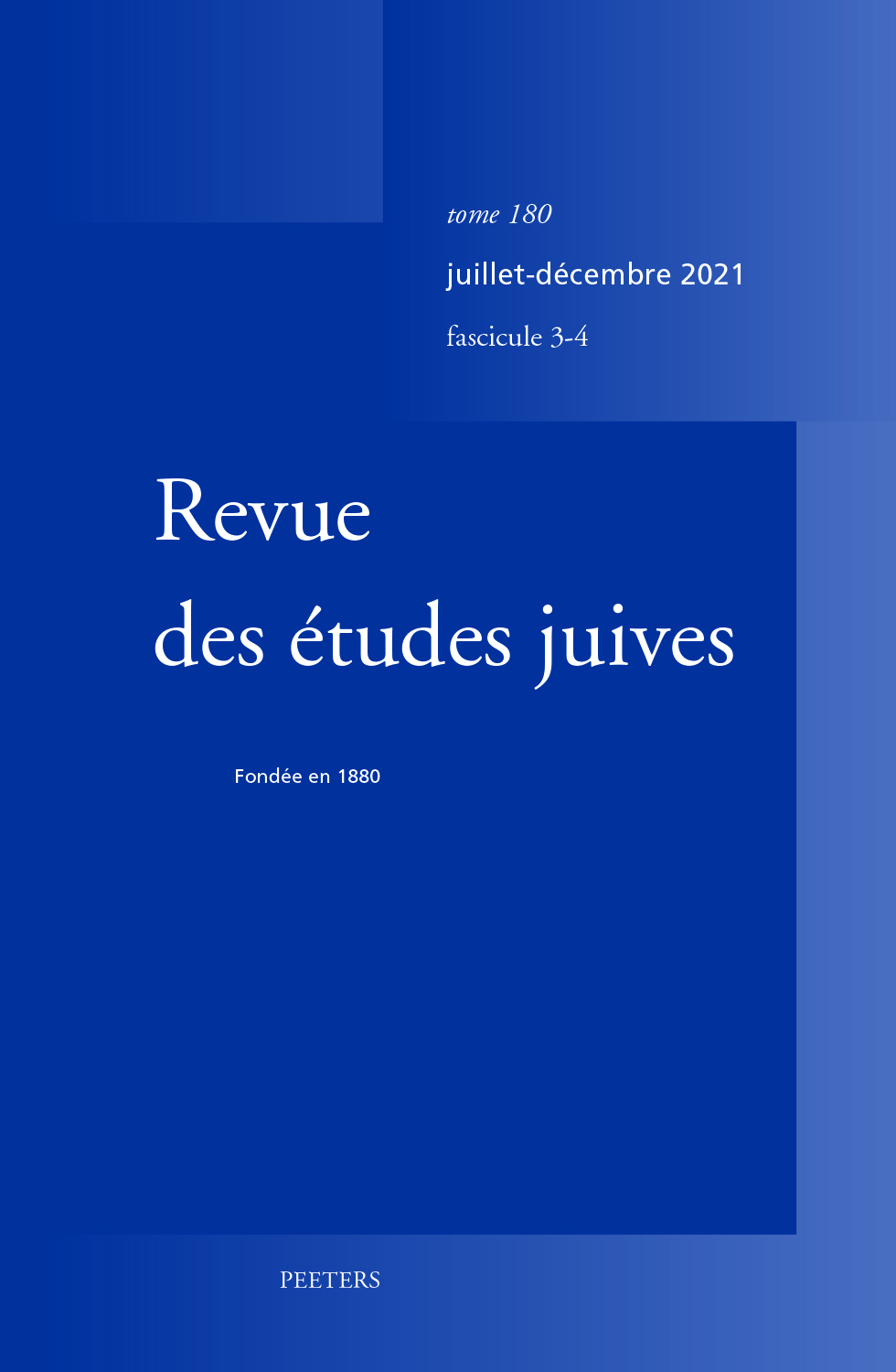 previous article in this issue previous article in this issue | next article in this issue  |

|
Document Details : Title: Newly Discovered Early Palimpsest Fragments of the Talmud Yerushalmi from the Cairo Genizah Author(s): OLSZOWY-SCHLANGER, Judith , SHWEKA, Roni Journal: Revue des Études Juives Volume: 172 Issue: 1-2 Date: janvier-juin 2013 Pages: 49-81 DOI: 10.2143/REJ.172.1.2979740 Abstract : A previously unknown small collection of twelve fragments of medieval Hebrew manuscripts has recently come to light in the Bibliothèque Nationale de France. These fragments originate from the Cairo Genizah. Two of them contain an early version of the Talmud Yerushalmi. BNF Hébr. 1489 (1) contains one folio from the tractate Mo‘ed Qaṭan and BNF Hébr. 1489 (9), one folio from the tractate Soṭah. Both manuscripts are palimpsests written on recycled non Jewish manuscripts in Christian Palestinian Aramaic. In both cases, the folios belong to codices whose other parts have been discovered among other Cairo Genizah collections, respectively in the Bodleian Library in Oxford and the Cambridge University Library. The palaeographical analysis of the fragments suggests that they are among the earliest known witnesses to the Talmud Yerushalmi text. The edition proposed in this paper shows some early reading variants. Une petite collection de douze fragments de manuscrits hébreux inconnus auparavant a été récemment identifiée à la Bibliothèque nationale de France. Ces fragments proviennent de la Guenizah du Caire. Deux de ces fragments contiennent une version ancienne du texte du Talmud de Jérusalem. BNF hébr. 1489 (1) contient un feuillet du traité Mo‘ed Qaṭan et BNF hébr. 1489 (9) un feuillet du traité Soṭah. Les deux fragments sont des palimpsestes, écrits sur des manuscrits recyclés en araméen chrétien palestinien. Dans les deux cas, d’autres fragments provenant des mêmes codex talmudiques ont été conservés dans d’autres collections provenant de la Guenizah du Caire: à la bibliothèque Bodléienne à Oxford, et à la bibliothèque universitaire de Cambridge respectivement. L’analyse paléographique des fragments suggère qu’ils appartiennent aux plus anciens témoins du texte du Talmud de Jérusalem, tandis que l’édition du texte révèle la présence des variantes de lecture anciennes. |
|
